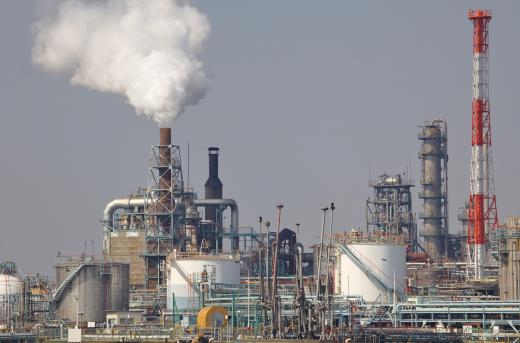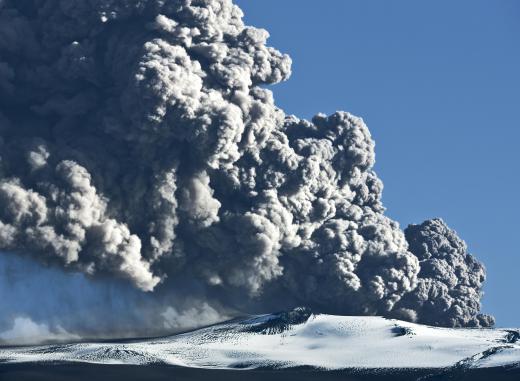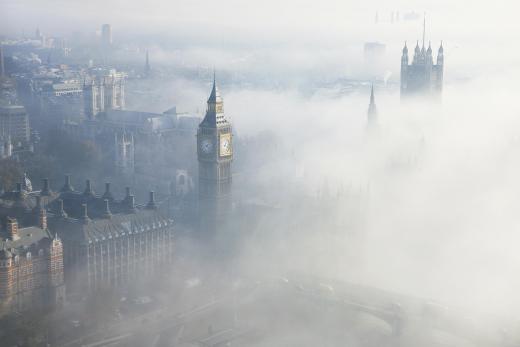What is Fog?
 Mary McMahon
Mary McMahon
Fog is a cloud that is in contact with the ground. Much like clouds in the sky, it forms when the air becomes supersaturated, meaning that it can no longer hold moisture in the form of vapor. As a result, water precipitates out of the air, forming a fine mist of water droplets. If the air becomes saturated enough, the droplets will turn into drizzle or rain. The foggiest place on Earth appears to be the Grand Banks, an area off the coast of Newfoundland.
The warmer air is, the more moisture it can hold in the form of vapor. Fog and clouds, therefore, form when air is rapidly cooled, and the moisture in the air adheres to particles such as dust or sea salt. Clouds form because humid air cools as it rises into the Earth's atmosphere. Fog can form in a number of ways, although most breaks down into either advection or radiation fog. In both instances, the cloudy air is often markedly cooler than neighboring clear air, and it can feel clammy because of all the drops of moisture.

When a warm front of moist air moves over cooler land, it can form advection fog. The cool land causes the air in the warm front to cool, forcing it to become supersaturated. Many people who live near the ocean are familiar with this phenomenon. Radiation fog forms when the surface of the earth cools, typically in the evening. As the earth cools, it causes the air around it to cool as well, and fog appears. Fog can also settle in around valleys and other depressions when hot air on top of a column of cold air forces the air to remain close to the ground. This type typically occurs in the morning, before the sun warms the cooler air, allowing it to rise so that the fog will dissipate.

Fog can get quite dense, potentially obscuring visibility very seriously. In a reference to this quality, many people use the term metaphorically, to talk about clouded vision. Many image editing programs also offer a “fogging” option which creates a slightly obscured image. Fog can also play tricks on the other senses, changing the way that sound and light move and making it difficult to orient oneself.

The classic “London fog” of the 19th century was actually smog, a form of pollution. Smog forms when particulate matter in the air gets so concentrated that it starts to obscure visibility, and it can represent a serious health risk. A related concept, vog, is natural smog caused by volcanoes. Pollutants expelled by the volcano while it erupts mix with the air to form a thick cloud, which can often be quite noxious due to high concentrations of sulfur around volcanoes.
AS FEATURED ON:
AS FEATURED ON:














Discussion Comments
hi i had to research this and this helped a lot. Thanks
Fog is dangerous to drive in. In some areas, such as along coastlines, a low fog is an almost daily occurrence. People who drive during even a light fog should be sure to use fog lights and keep windshields defrosted.
"London fog", like London rain, is an unfortunate and inaccurate stereotype of English weather and climate. Though the smog of the 19th century is not out of place in a Sherlock Holmes movie, it is not the way the city looks now.
Fog contributes to the fertility of the soil. It adds large quantities of minerals to the soil, such as chlorine, nitrogen and iodine.
Post your comments